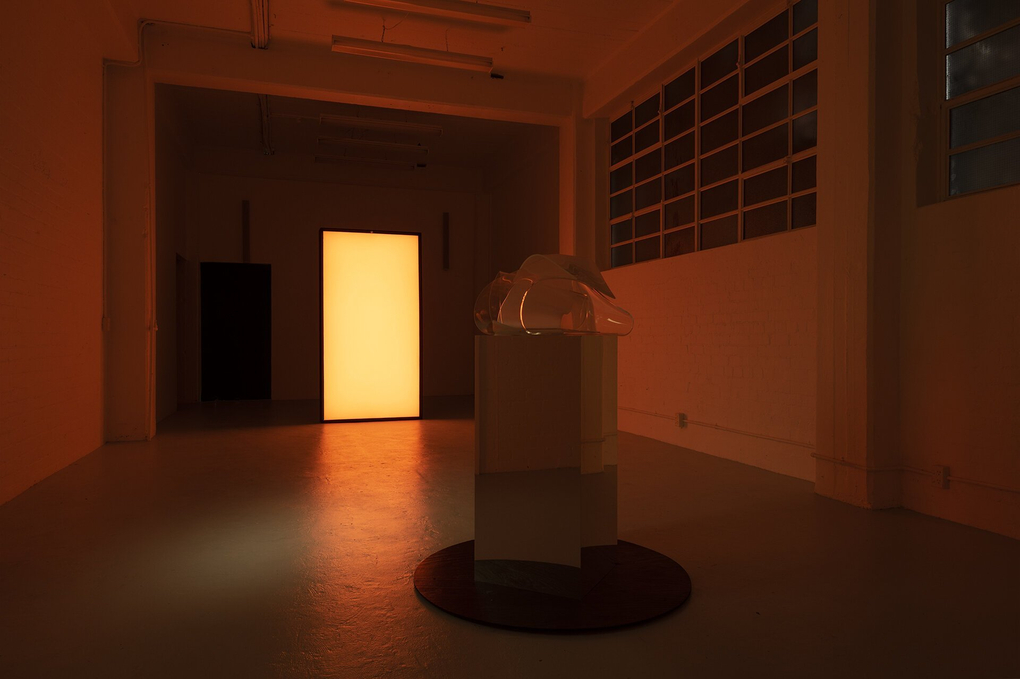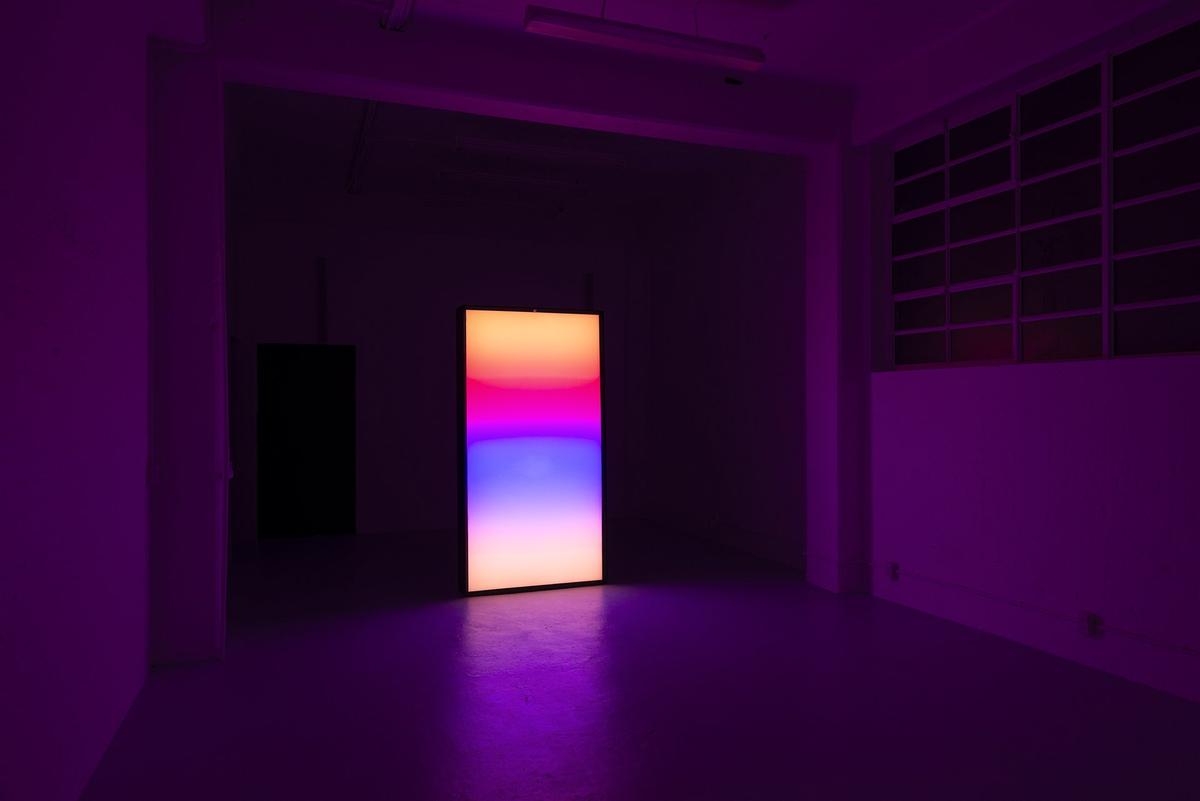The discovery of a metal prism, three metres tall and made (it was assumed) of either stainless steel or aluminium, in late 2020 in a red sandstone slot canyon in Utah, did very little for the imagination, as it turned out. Whatever the intentions of its maker, the "mystery" that might have been suggested of a timeless, autonomous, alien structure, appearing and then disappearing without a trace, was subsumed by the all-too earthly, all-too contemporary cinematic imagination. Stanley Kubrick’s monolith, Jörg Heiser notes, is “oppressively, physically present” in the cinematic space: "an empty signifier of both the black box of progress and the gravestone of history, bearing no inscription."(1) It was this empty signifier, an “operation of radical abstraction”(2), that drove Pauline Kael’s disgust in her infamous review of 2001: A Space Odyssey (1968).(3) "2001 is a celebration of a cop-out,”(4) she lamented. “It says man is just a tiny nothing on the stairway to paradise, something better is coming, and it’s all out of your hands anyway. There’s an intelligence out there in space controlling your destiny from ape to angel, so just follow the slab. Drop up.”(5)
As a cultural artefact indistinguishable from the history of cinema, it seems fitting that the monolith should come to act as a stand-in for cinema itself. Tyler Jackson’s LIGHT-HAUS, on display at play_station from 27 November to 12 December 2020, reinterprets the monolith as a form of abstract cinema, the medium Lazló Moholy-Nagy heralded as “a culture of light.”(6) Stripping the act of viewing moving images down to the essentials of light and sound, the work comprises Sentience Monolith (2020), a glowing rectangular light box bathing the play_station space in a series of (mostly) monochromatic hues. The colours emanating from the monolith shift in harmony with the accompanying sound work by Wellington artist Jack Jenkins—a consistent, humming orange is punctuated by sudden flashes of green, yellow, pink. Occasionally the light splits—red bleeds into green, pale yellow somehow bleeds into a deep blue. But always, back to orange.
The shifts in colour emanating from the monolith seem to be carried by Jenkins’ soundtrack, in turn drenching the entire space in the monolith’s glow, a simultaneity of movement engulfing the space—and the audience.
Jackson’s practice explores and provokes audience receptions to colour and light, creating light works that evoke a dynamic, participatory response to colour. In LIGHT-HAUS, the method is repurposed to consider our responses to cinema itself. The installation, as the accompanying text explains, looks to reconstruct Herbert Bayer’s idea of the cinema through reinterpretation of the monolith, provoking audience perceptions of light, colour, sound and cinema. The Bauhaus designer mostly known for his work in graphic design and typography (and for advising on corporate art collections), Bayer was also fascinated by exhibition design and the spatial-temporal possibilities of audience perception. In the gesamtkunstwerk tradition of Bauhaus, Bayer conceived of his exhibition designs (sometimes realised, sometimes not) as:
“an apex of all media and powers of communication and of collective efforts and effects. The combined means of visual communication constitutes a remarkable complexity: language as visible printing or sound, pictures as symbols, paintings, and photographs, sculptural media, materials and surfaces, colour, light, movement (of the display as well as the visitor), films, diagrams, and charts. The total application of all plastic and psychological means (more than anything else) makes exhibition design an intensified and new language.”(7)
This intensified and new language called for displays that were integrated with the architectural structure, light and colour fusing with motion and sound. In design for a cinema (1924-5), Bayer envisaged a new form of cinema, a rectangular building in which the width and depth of the auditorium was determined by the power of the projector, the entire architectural structure given over to the projected images.(8) The design dispensed with the theatre-derived cinema house, abandoning the marquee-style building, stage, curtains, balconies and side-viewing, to create a new form of cinema-viewing that allowed for “a simultaneity of sound, speech and various kinds of moving images.”(9)
Recalling Bayer’s totalising cinematic experience, LIGHT-HAUS calls attention to the way that sound and light, colour and movement are integrated in the viewing experience. The shifts in colour emanating from the monolith seem to be carried by Jenkins’ soundtrack, in turn drenching the entire space in the monolith’s glow, a simultaneity of movement engulfing the space—and the audience. I’m resisting calling the work immersive—that low-hanging fruit of art writing used to describe anything vaguely multi-sensorial or commanding of its space. In any case, immersion had a different meaning in relation to Bayer’s ideas of exhibition design. Bayer’s concerns with the sensory experience of attending an exhibition and the possibilities of communication through total absorption were not a means to create a scenic backdrop in which the viewer might lose themself among the exhibits, but one of “total immersion of thought,” a didactic form of exhibition making that would “draw spectators out of their supposedly passive and distanced contemplation and turn them into dynamic and active participants.”(10)
Installation Documentation: Tyler Jackson, LIGHT-HAUS, play_station gallery, Wellington 2020 (2021)
“What [Bauhaus] designers envied most about film,” notes Oliver Lugon, “was the possibility of controlling a sequence of images, of imposing on the visitor a planned progression of pictures, impressions and information.”(11) Bayer’s theories of a completely immersive exhibition design and its didactic potential were, as Lugon conceptualises, a form of cinema in reverse. Controlling the participatory walk of the audience through the exhibition was central to this idea. “Bayer was fascinated by the idea that one can develop a line of thought by setting up an itinerary, i.e., guiding people’s thoughts to guide their minds.”(12) The exact opposite, in a way, to Kael’s passive, stoned audiences at 2001, blissfully helpless before the slab, going “to heaven in Cinerama.”(13)
Viewing LIGHT-HAUS, I find myself looking for a narrative in the rise and fall of the music, in the shifting colours emanating from the monolith. Jenkins’ accompanying audio work consists of five tracks, separated by silent intermissions—definitive breaks in the work—together producing a one-hour long loop, similar to the duration of a contemporary film work. The consistent return to a humming orange gives the movement between sound and light a conceptual cohesion, and the orange glow begins to feel like a narrative safety point, a return to the familiar. As the music settles and the colour shifts back to orange, LIGHT-HAUS feels a bit like staring into the sun, but somehow soothing. Stand before it for long enough and the colour seems to expand beyond the harsh edges of the monolith—the immateriality of light and sound barely reined in by the (usually) impenetrable rectangular structure.
It calls attention to the monolith as screen, Deleuze’s "frame of frames" that determines, for the viewer, “the out-of-field … what is neither seen nor understood, but nevertheless perfectly present.”(14) Expanding beyond the cinematic apparatus, the out-of-field allows for the introduction of the trans-spatial into an otherwise closed, two-dimensional system.(15) The movement of light in space, as Moholy-Nagy understood, depends on its props. About Moholy-Nagy’s Light-Space Modulator (1930), Frank Popper observed, “what strikes the observer in this complex and mobile work is the movement of light and shade projected on the walls and ceiling, and also the varying reflections on the metal elements of the construction itself.”(16)
The final component of LIGHT-HAUS is a sculpture opposite the monolith—positioned high on a plinth, its otherwise dynamic folds seem resolutely inert in the face of the shifting colours of the monolith. Its otherwise white, mirrored surface absorbs and reflects the glow of the monolith as it shifts through its sequence of colour. Devised as a form of lighting equipment in the tradition of Moholy-Nagy, for which “the power of the work,” Popper observes, “depends more on the reflection than on the original material.”(17) It is a reminder, Jackson explains, that cinema is a place for seeing, for experiences being performed. A reminder of cinema as a participatory spectacle. Just follow the slab.

Installation view of LIGHT-HAUS (2020) Tyler Jackson, play_station, Wellington
